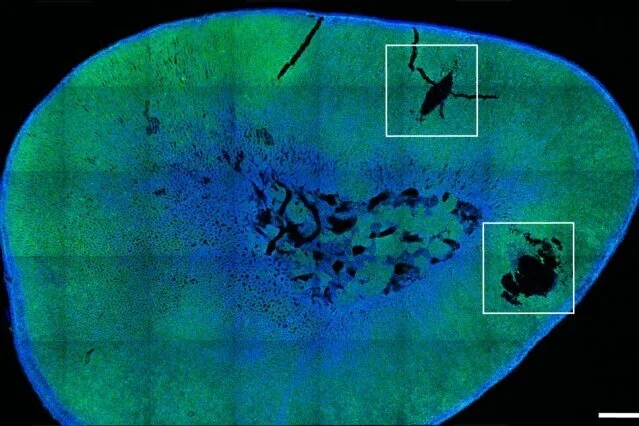Researchers fight Alzheimer's disease using nanoparticles

About 29 million people around the world are affected by the disease "Alzheimer". In an international collaboration, scientists of the Max Planck Institute for Polymer Research (MPI-P) in Mainz together with teams from Italy, Great Britain, Belgium and the USA are now working together on an approach for a therapy.
On the one hand, the goal is to understand the processes occurring in the brain that lead to the disease; on the other hand the development of a method for targeted drug delivery.
In the human brain, nerve cells - so-called neurons - care for the transmission of electrical signals. They form the functional component responsible for sensations, stimuli and memories. In the presence of dementia, there is an adsorption of proteins outside the neurons, which then leads to the death of the neuronal cells. How to prevent the death of neurons is still the subject of scientific research today.
In a recent transnational research project funded by the EU Joint Program on Neurodegenerative Disease Research (JPND), which is funded in Germany by the German Federal Ministry of Education and Research (BMBF), researchers are now trying to address this question.
While project partners in Italy, Great Britain, Belgium and the USA investigate the exact processes in the brain, the MPI-P explores methods to transport drugs. The overcoming of a natural barrier in the body - the so-called blood-brain barrier - represents the main challenge. Drugs to be used in the brain must be able to pass this barrier first before acting in the brain.
For this purpose, the Mainz scientists are working on nanocapsules that are supposed to overcome the barrier. On the one hand, it has to be taken care on a long circulation time of the nanocapsules in the blood in order to increase the probability of interaction with the target cells in the affected brain areas. For this, it is important to design the nanocapsules so that they are not directly excreted by kidney or liver. On the other hand, special "address labels" - consisting of proteins - must be placed on the capsule surface in order to be recognized and absorbed by the target cells, much like a key with a lock. "We are still filling our nanoscale capsules with dye," says Dr. Svenja Morsbach, group leader in the department of Prof. Katharina Landfester at the MPI-P. "If the transport through the blood-brain barrier with the nanocarriers works, we hope we can simply exchange the dye for a suitable drug."
The partners involved in the project in Italy, the United Kingdom, Belgium and the USA are examining the exact processes in the brain in parallel with the development of the transport system in Mainz. Here, so-called "exosomes" and "neurotrophic factors" are of major interest. Exosomes are small "miniature cells" that can be released by real cells to communicate with each other. These have a dimension of only about 100 nanometers - that is 100 billionths of a meter in size. At the same time, "neurotrophic factors" are biochemical messengers responsible for the growth and survival of nerve cells. The interaction of exosomes and neuron-stimulating factors is seen as the main focus for the understanding of dementia by researchers.
The project is designed for a period of three years and is funded with over one million euro, of which a share of more than 400,000 euros is attributed to the subproject of the Mainz scientists. The researchers hope that understanding the disease itself and developing a functioning transport system will be an important step in the treatment of dementia.





